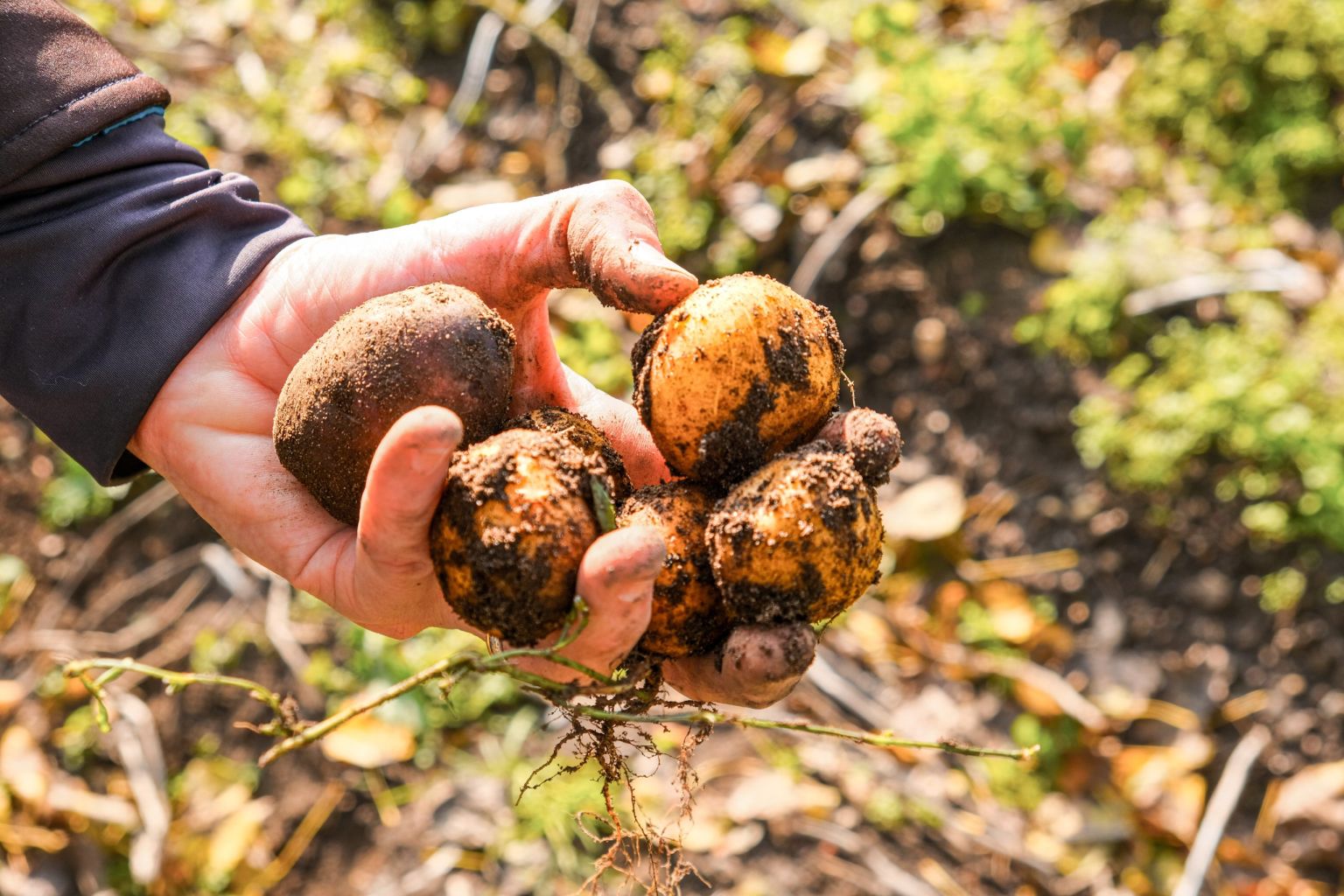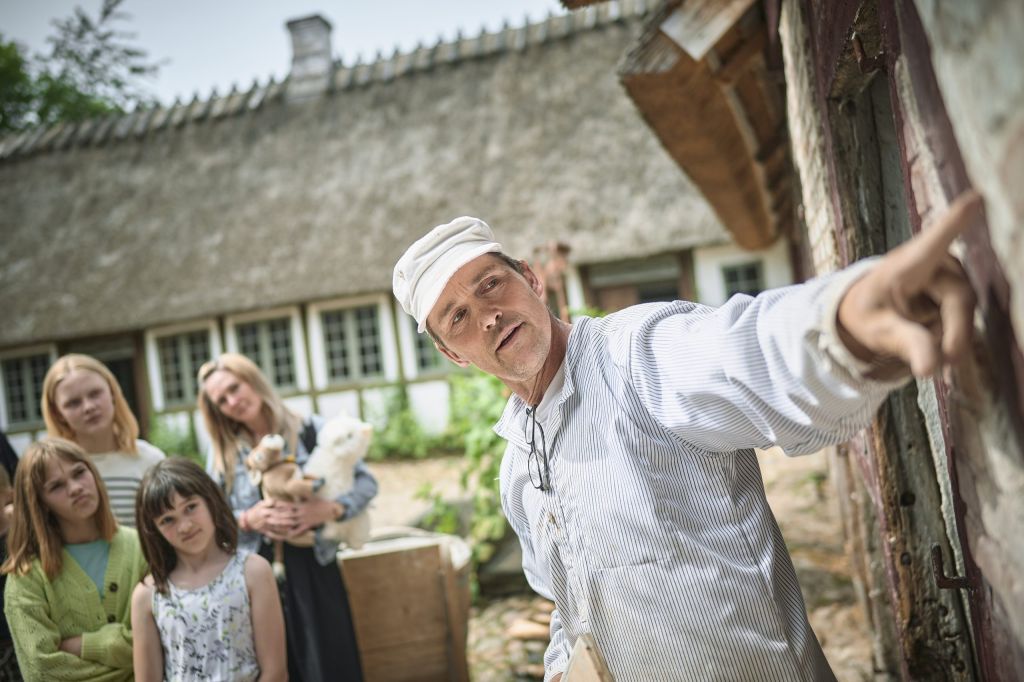
About The Funen Village
The Funen Village offers a historical perspective on sustainable living.
Today’s greatest challenges are the climate, environmental, and biodiversity crises. At The Funen Village, we focus on how everyday actions can make a difference.
We are a museum that draws inspiration from past experiences of sustainable living and closer harmony with nature to show how we can live more climate-friendly lives today.

Scarce Resources and Circular Living
For generations, people in our part of the world have lived in a society of abundance, with consumption at very high levels.
We consume and discard, eat only the best parts of food, and produce enormous amounts of waste. This must change in the future, as we need to reduce consumption and our impact on the planet—especially in wealthy countries like Denmark.
Life in the 18th-century villages — the kind The Funen Village illustrates — was in many ways the opposite of today. Society then faced resource scarcity, and consumption patterns were entirely different. Raw materials were limited, so everything was used to the fullest—for food, building materials, clothing, and tools. Items were reused, repaired, upcycled, downcycled, and nothing went to waste; even leftovers served as fuel or fertilizer.
The rural community was built around a circular understanding of life, based on seasonal rhythms. Each spring, life started anew. Today, our mindset is linear, focused on more, bigger, and better, with growth as the primary measure. At The Funen Village, we encourage reflection on whether “more” really equals “better” or if we should return to a more circular, sustainable approach.
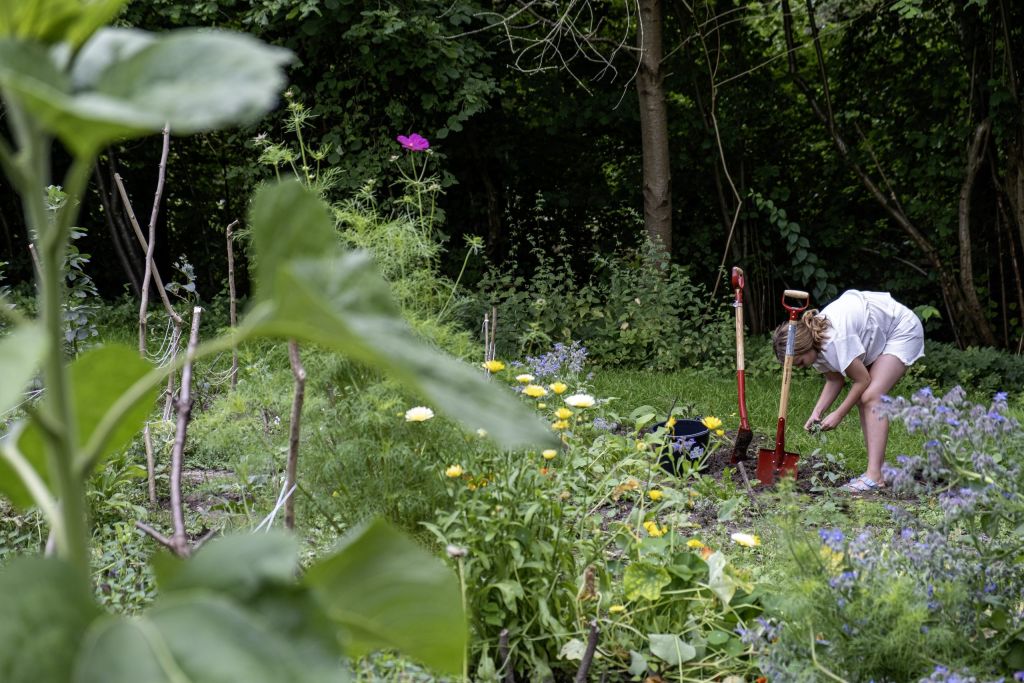
Inspiration for Today
The Funen Village demonstrates daily life and the many work processes of 19th-century rural life.
Some practices seem far removed from modern life; others can be adopted at home, in your garden, living room, or workshop.
Here are a few ways the past can inspire a more sustainable everyday life. Everyone can make a difference.
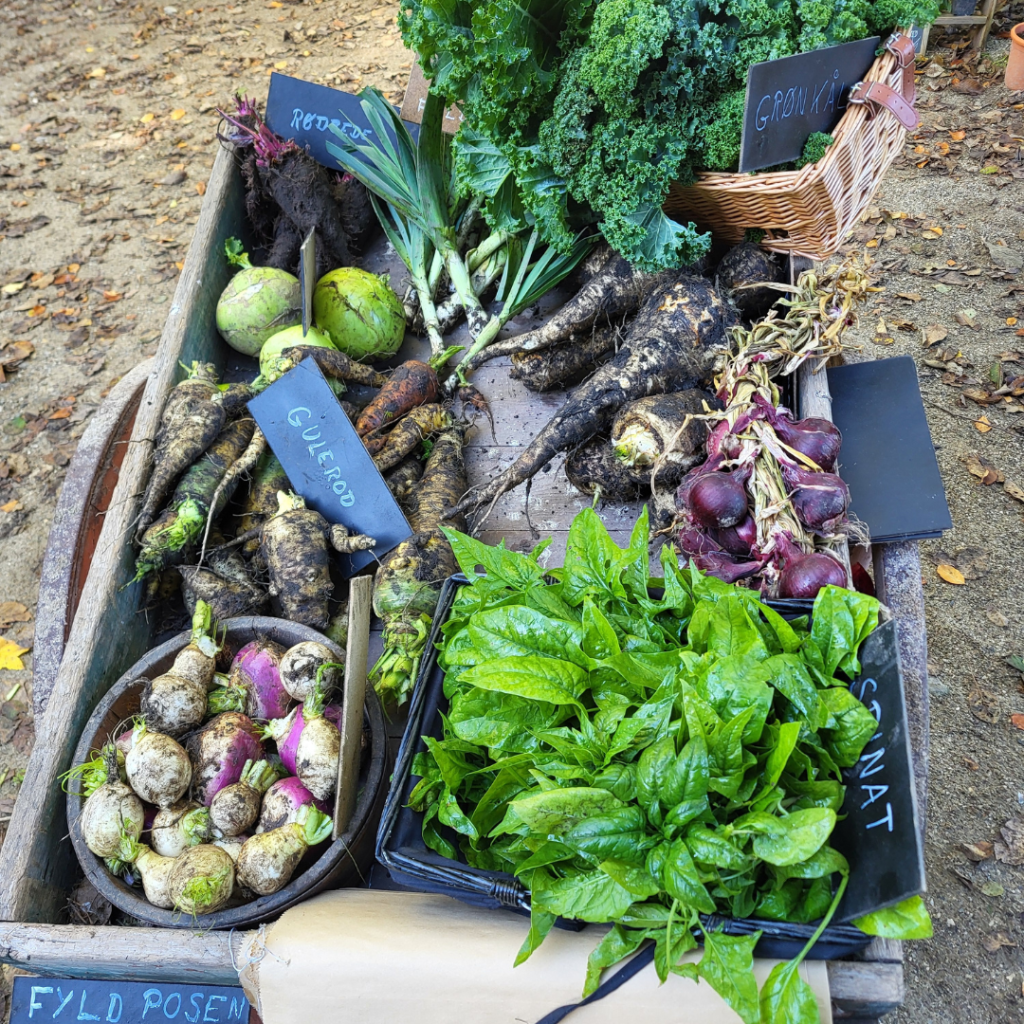
Cook with the Seasons
All farming is about putting food on the table. At The Funen Village, work in fields, gardens, and stables ultimately produces meals cooked on stoves and hearths.
Food is prepared according to the seasons, using the ingredients available at the time. Some food is preserved to last through the harsh winter months.
In the 1800s, there was no food surplus. Everything from the stables, fields, and gardens was eaten, fed to animals, or processed into useful items. Otherwise, there was not enough to eat. Today we face overweight problems; back then, malnutrition was common. There were notable height differences between wealthy and poor children. It was simply difficult to produce enough food for everyone.
At The Funen Village, we aim to inspire sustainable, climate-friendly cooking using seasonal, local ingredients, reduce food waste, and grow your own produce.
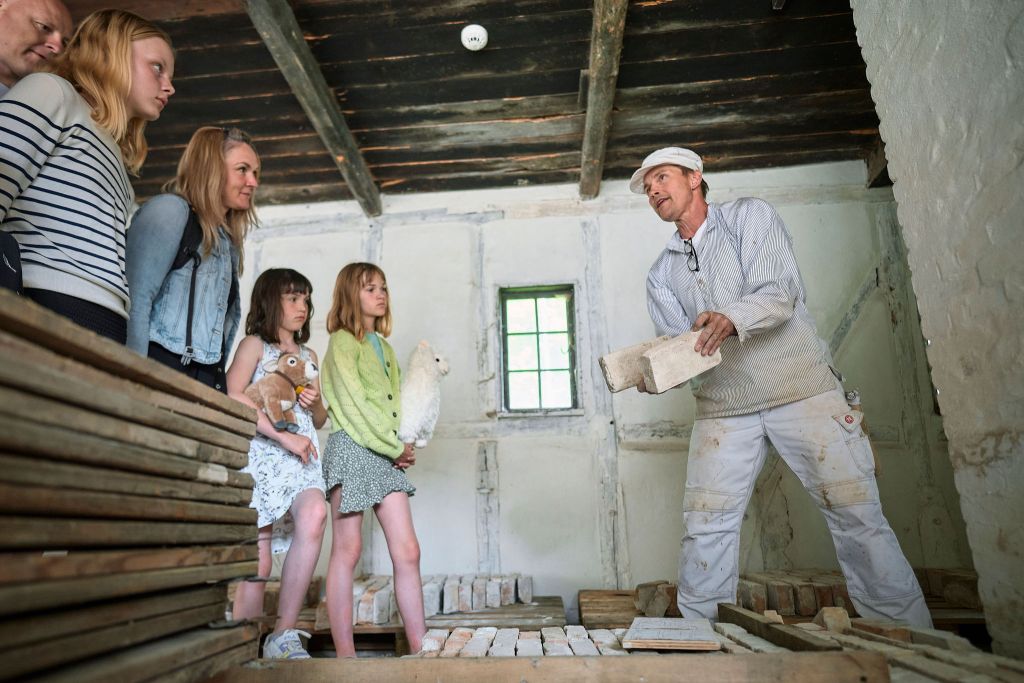
The Value of Good Craftsmanship
Natural materials—clay, wood, stone, straw—were central to making houses, tools, and household items.
With these materials and skilled craftsmanship, almost everything needed could be produced. What couldn’t be made in-house was crafted by local specialists, blacksmiths, workshops, or weavers.
Houses were built using locally sourced materials that could be repaired and maintained. Timber-framed houses require constant care but can last hundreds of years. The Funen Village’s houses and farms, some nearly 500 years old, demonstrate the durability of sustainable materials. These historic buildings highlight the value of long-lasting, sustainable construction today.
Every farm and house had a workshop, essential for making and repairing tools for the fields, workshops, and homes. Unlike today, there was no easy option to replace broken items. If a rake or axe broke, a new one had to be carved. The Funen Village’s craftsmen and artisans inspire visitors to enjoy extending the life of objects through sustainable repairs. We are capable of more than we think.
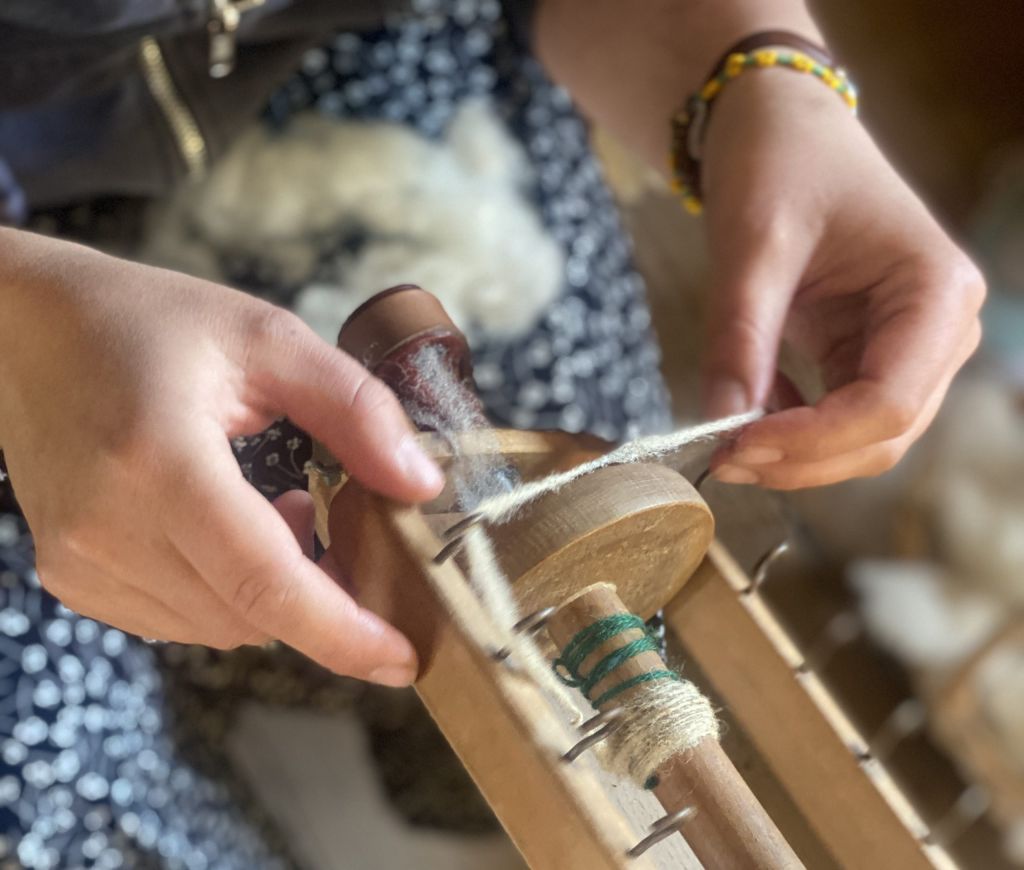
Clothing Has Value — Take Care of It
I fortiden var produktion af tekstil til husstanden en kæmpe opgave, som gårdens kvinder tog sig af.
Textile production for the household was a huge task, primarily managed by farm women.
From sheep’s wool to warm socks, or flax growing in the field to a wearable shirt, the process was long and complex. Textiles were highly valued.
Today, we can buy a t-shirt for a modest sum, and clothing consumption is extremely high, despite its environmental impact. Danes are among the world’s top clothing consumers. Instead, we should aim to be a sustainable society that reuses, makes, and values items produced from local materials with our own hands.
At The Funen Village, we restore value to clothing, emphasizing sustainable quality and encouraging visitors to learn traditional crafts. Our textile-skilled volunteers share their extensive knowledge and experience.
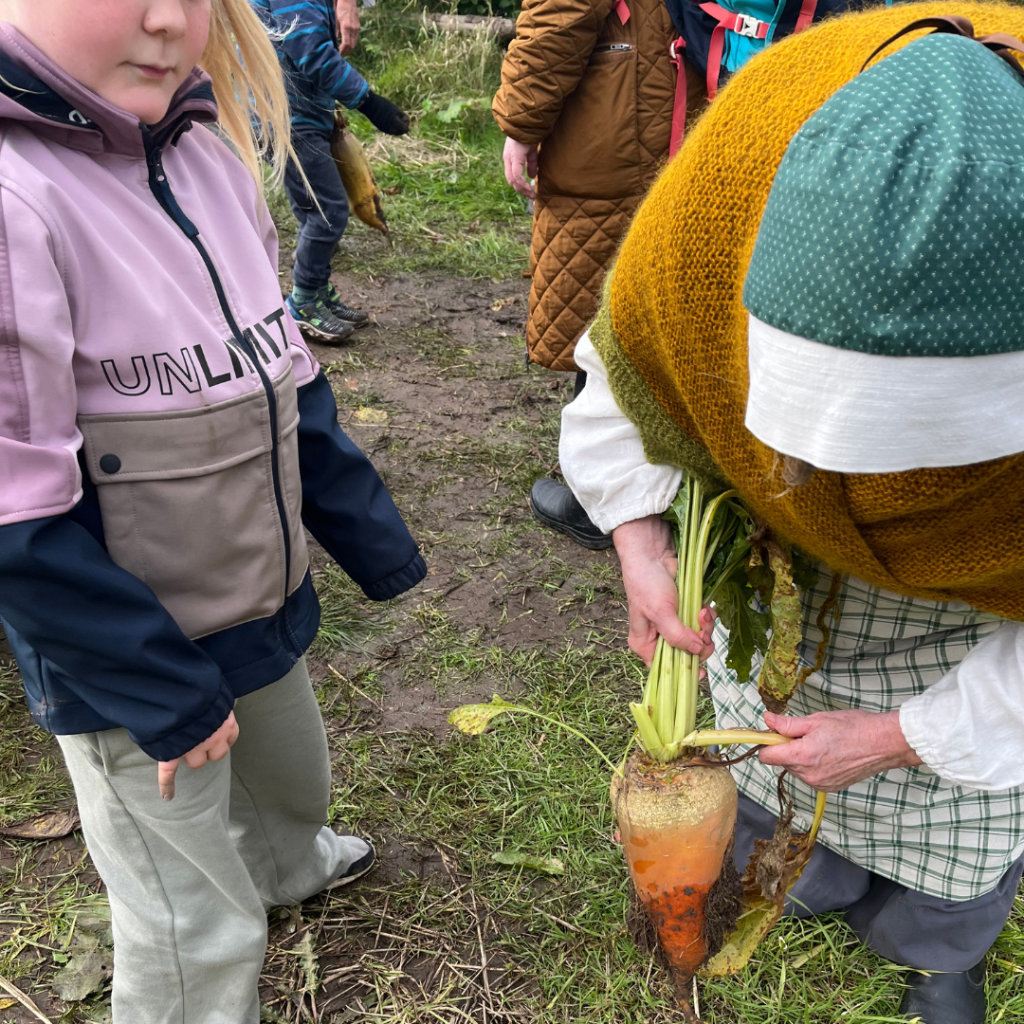
Inspiration for Modern Life from “the Old Days”
The Funen Village does not advocate returning to “the good old days”—they were not always good.
The Funen Village does not advocate returning to “the good old days”—they were not always good.
Past people were not sustainable by choice but by necessity due to scarce resources. Today, resources are becoming limited. We must reuse, recycle, and reduce waste, act locally, and eat seasonally.
The past provides historical perspective on the present. Necessary practices of the past can inspire us to grow vegetables, repair items, undertake DIY projects, consider raw materials, and reduce food waste today.
We are not advocating a return to the past but offering a historical perspective on sustainable living. Our behavior must change to stop global overconsumption, and we want to make a difference.
The Funen Village is certified as a Green Attraction and is a member of the Organization of Danish Museums’ Charter for Green Transition of Danish Museums.
Read more about The Funen Village and Museum Odense’s work with sustainable museum operations here
Sustainable Museum Operations
You are at a museum certified as a Green Attraction. Read more about our approach to sustainable museum management here
